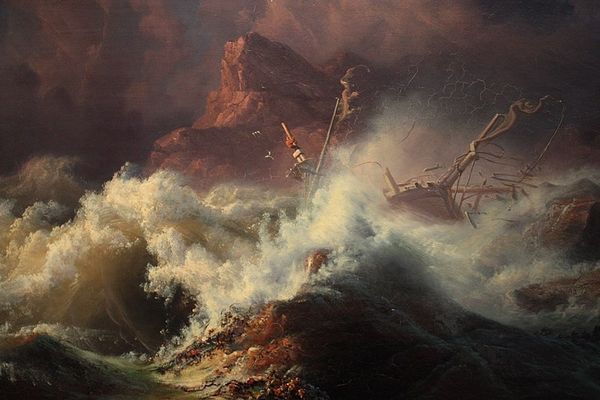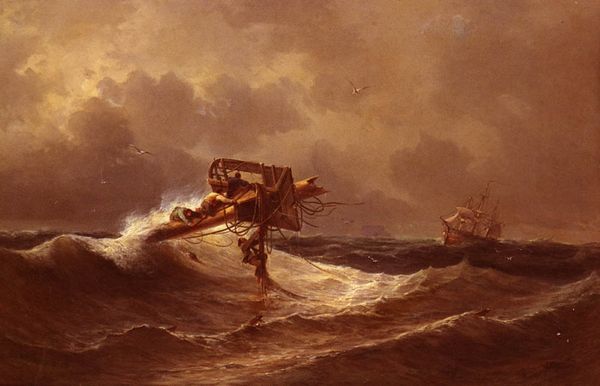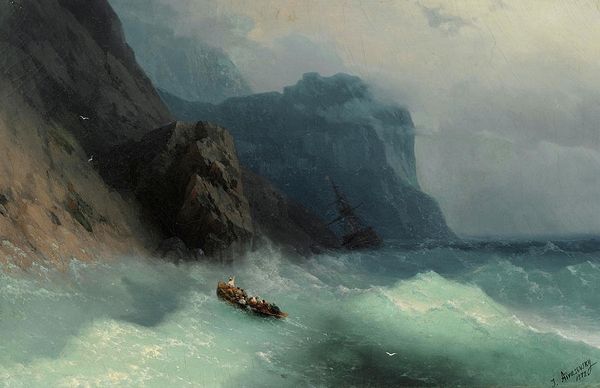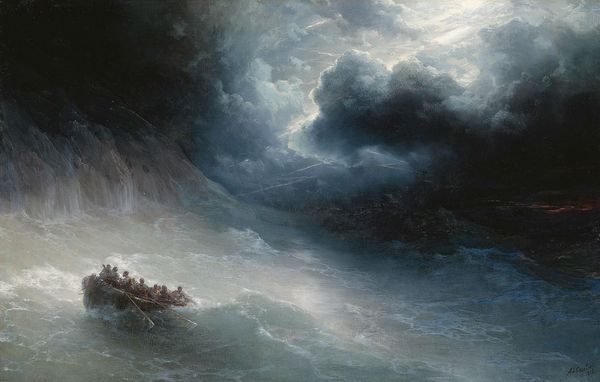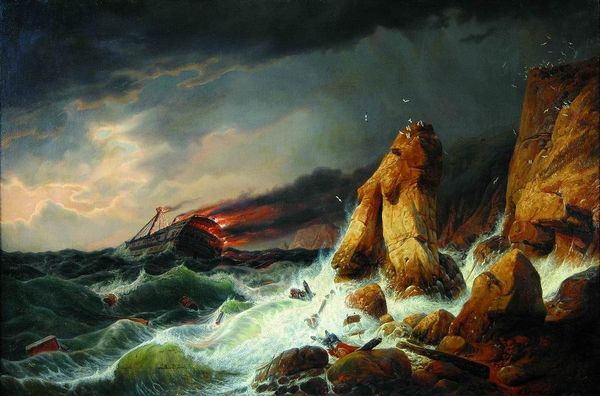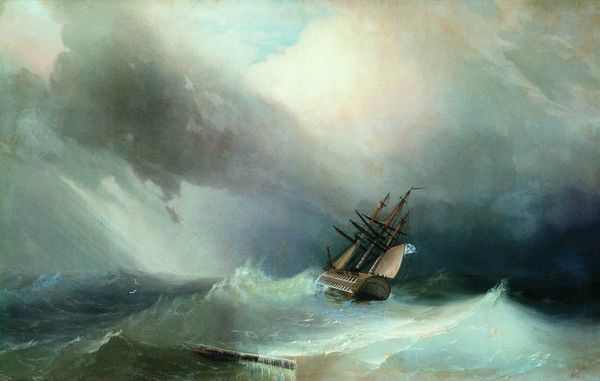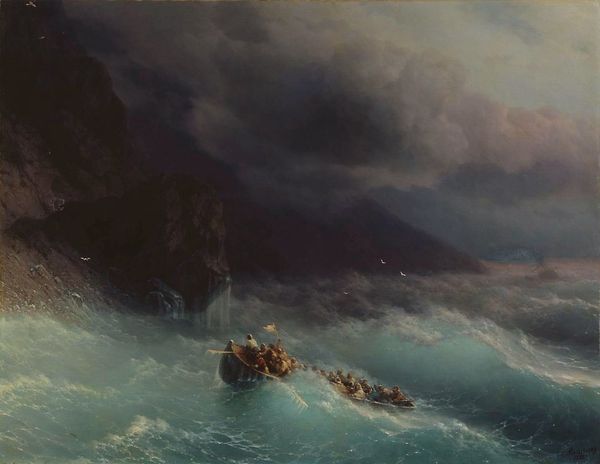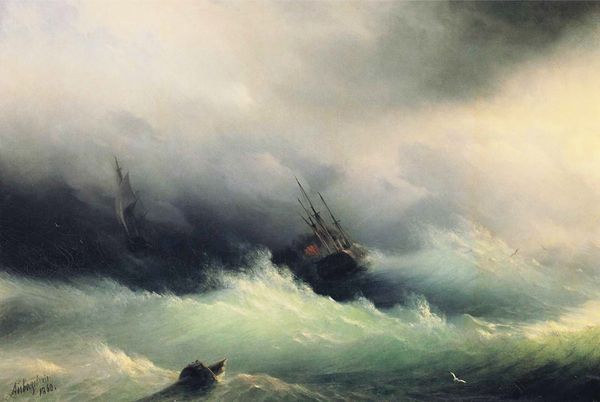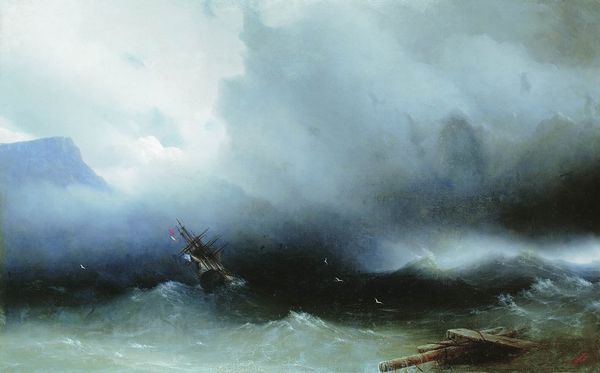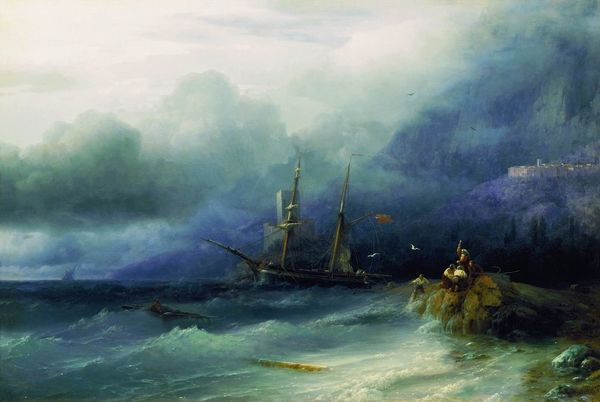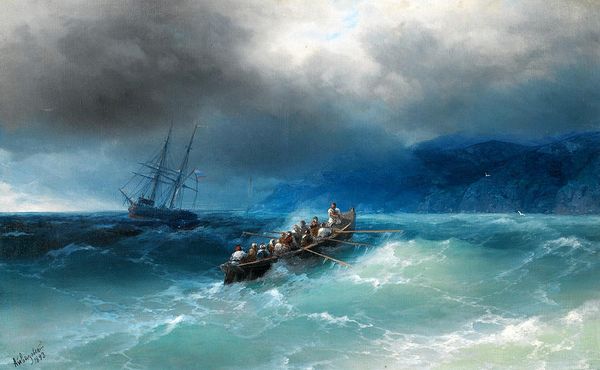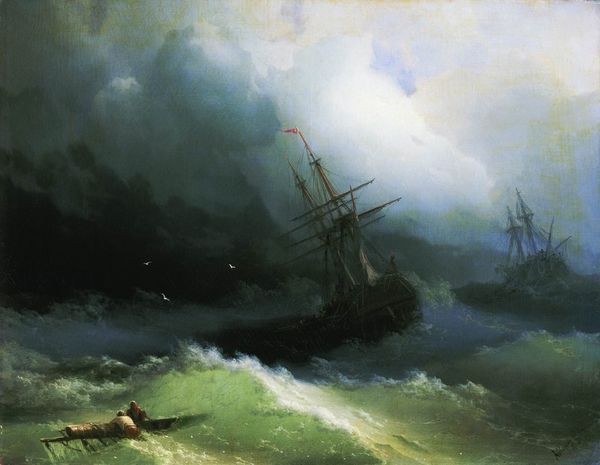
oil-paint
#
oil-paint
#
landscape
#
oil painting
#
romanticism
#
genre-painting
Copyright: Public domain
Editor: Andreas Achenbach’s “Ship in Stormy Seas,” painted in 1840 using oil paint, really captures a sense of raw, untamed nature. I find myself both intimidated and strangely drawn to the tumultuous waves and dark skies. What can you tell me about the forces, both seen and unseen, at play in this painting? Curator: Achenbach's dramatic rendering is a product of its time, firmly rooted in the Romantic movement's fascination with nature's power. These kinds of images became powerful symbols, especially the sea, representing both the sublime and the destructive. Do you notice anything about where works like this were usually displayed? Editor: Hmm, not immediately. Were they made for specific institutions or patrons? Curator: Often these pieces, with their inherent drama and scale, were destined for public display, contributing to a rising sense of national identity and pride tied to maritime strength. It speaks volumes about the sociopolitical landscape where naval power and exploration were heavily romanticized, right? How does knowing that change the way you view the piece? Editor: It definitely adds another layer. Seeing the painting as a sort of nationalistic symbol makes the storminess seem less chaotic and more… purposeful? Curator: Exactly. While aesthetically striking, these works promoted specific ideologies, solidifying public opinion regarding maritime activities and the assumed risks. How might an average viewer during that period interpret the imagery presented, do you think? Editor: They might have seen the storm and danger but felt assured by the heroic struggle of the figures in the boat, almost celebrating human resilience and, like you said, the might of their nation. It's interesting how context completely changes how I read it. Curator: Precisely. Analyzing the social and political implications enriches our understanding and prompts critical re-evaluation of its impact, beyond the aesthetic. It offers crucial lessons to us as interpreters of art today.
Comments
No comments
Be the first to comment and join the conversation on the ultimate creative platform.
